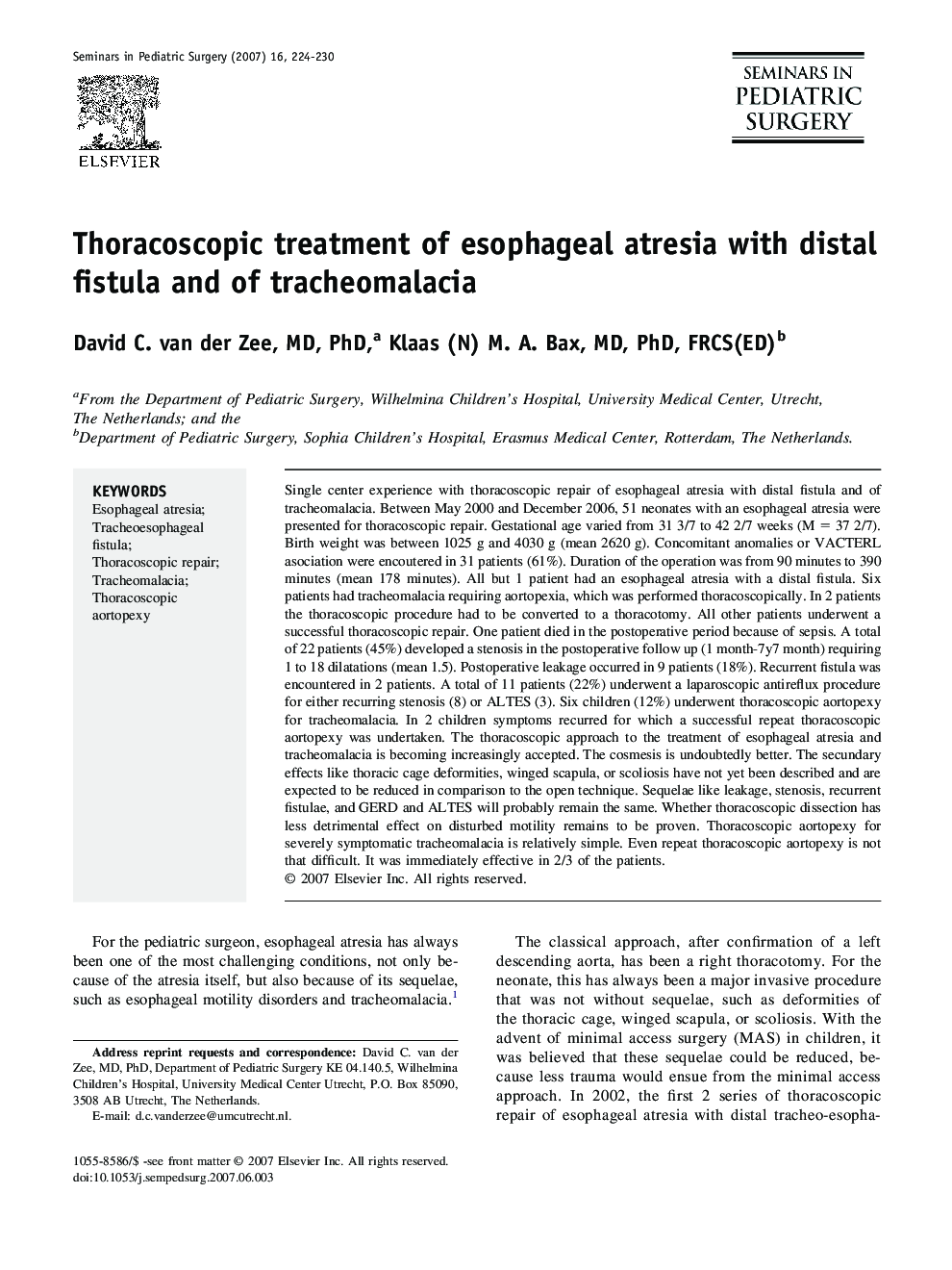| کد مقاله | کد نشریه | سال انتشار | مقاله انگلیسی | نسخه تمام متن |
|---|---|---|---|---|
| 4176742 | 1276320 | 2007 | 7 صفحه PDF | دانلود رایگان |

Single center experience with thoracoscopic repair of esophageal atresia with distal fistula and of tracheomalacia. Between May 2000 and December 2006, 51 neonates with an esophageal atresia were presented for thoracoscopic repair. Gestational age varied from 31 3/7 to 42 2/7 weeks (M = 37 2/7). Birth weight was between 1025 g and 4030 g (mean 2620 g). Concomitant anomalies or VACTERL asociation were encoutered in 31 patients (61%). Duration of the operation was from 90 minutes to 390 minutes (mean 178 minutes). All but 1 patient had an esophageal atresia with a distal fistula. Six patients had tracheomalacia requiring aortopexia, which was performed thoracoscopically. In 2 patients the thoracoscopic procedure had to be converted to a thoracotomy. All other patients underwent a successful thoracoscopic repair. One patient died in the postoperative period because of sepsis. A total of 22 patients (45%) developed a stenosis in the postoperative follow up (1 month-7y7 month) requiring 1 to 18 dilatations (mean 1.5). Postoperative leakage occurred in 9 patients (18%). Recurrent fistula was encountered in 2 patients. A total of 11 patients (22%) underwent a laparoscopic antireflux procedure for either recurring stenosis (8) or ALTES (3). Six children (12%) underwent thoracoscopic aortopexy for tracheomalacia. In 2 children symptoms recurred for which a successful repeat thoracoscopic aortopexy was undertaken. The thoracoscopic approach to the treatment of esophageal atresia and tracheomalacia is becoming increasingly accepted. The cosmesis is undoubtedly better. The secundary effects like thoracic cage deformities, winged scapula, or scoliosis have not yet been described and are expected to be reduced in comparison to the open technique. Sequelae like leakage, stenosis, recurrent fistulae, and GERD and ALTES will probably remain the same. Whether thoracoscopic dissection has less detrimental effect on disturbed motility remains to be proven. Thoracoscopic aortopexy for severely symptomatic tracheomalacia is relatively simple. Even repeat thoracoscopic aortopexy is not that difficult. It was immediately effective in 2/3 of the patients.
Journal: Seminars in Pediatric Surgery - Volume 16, Issue 4, November 2007, Pages 224–230